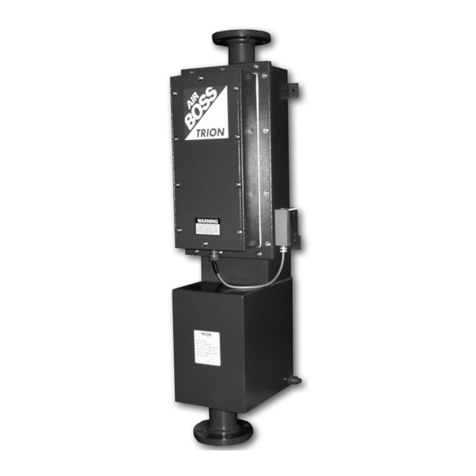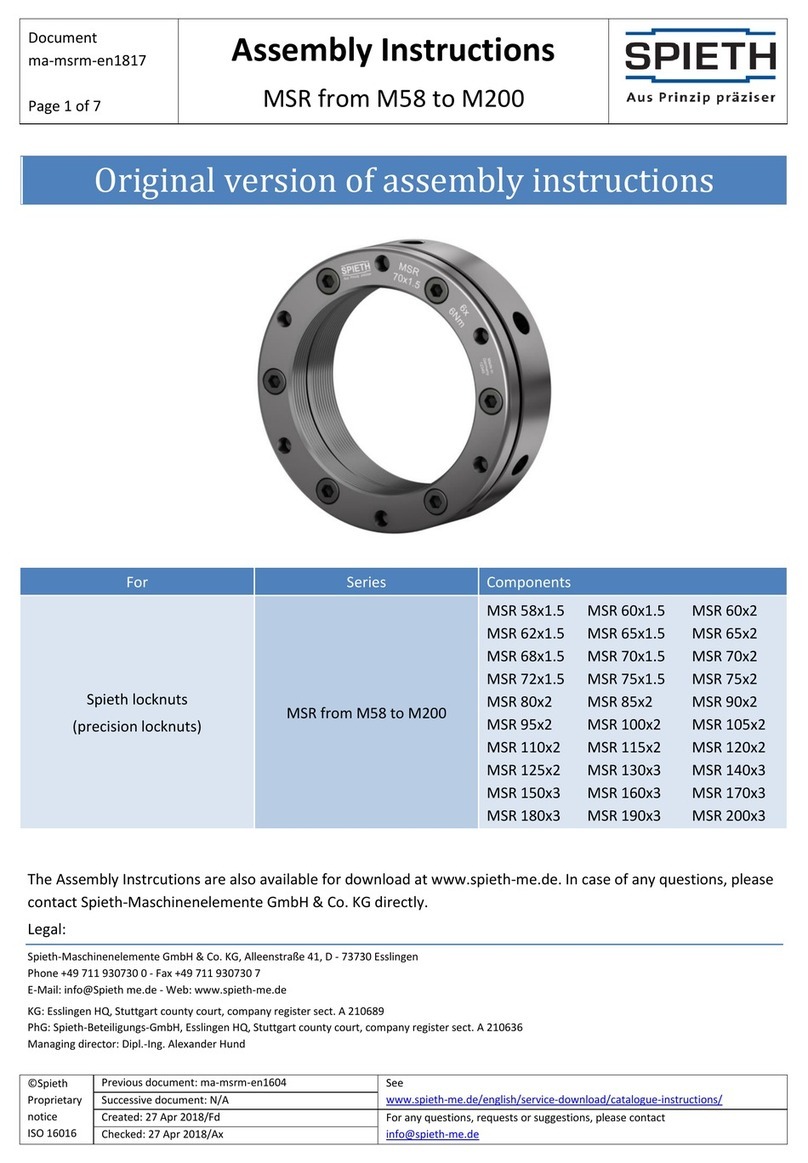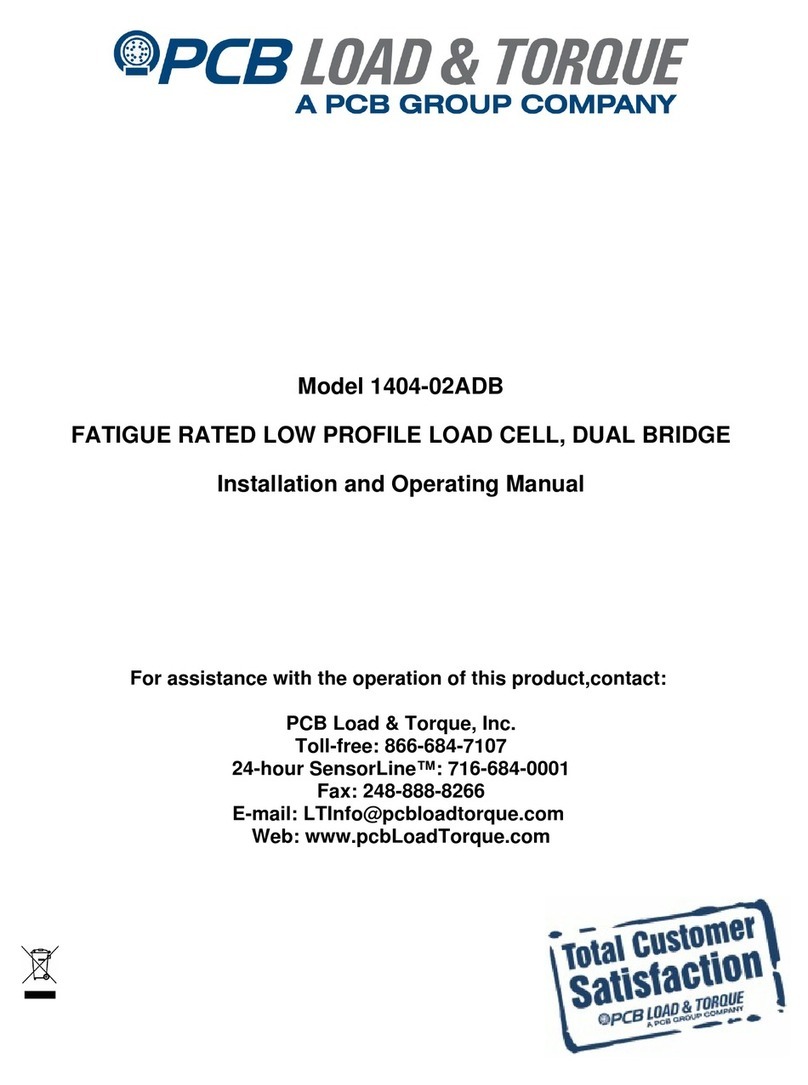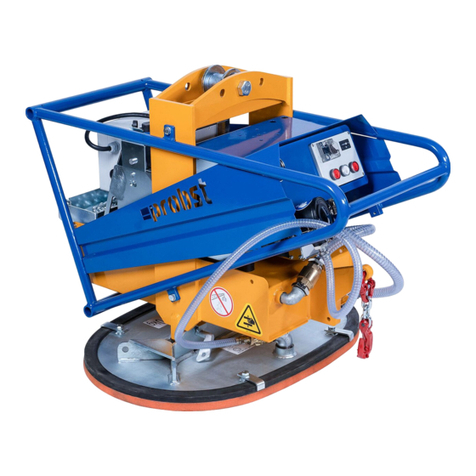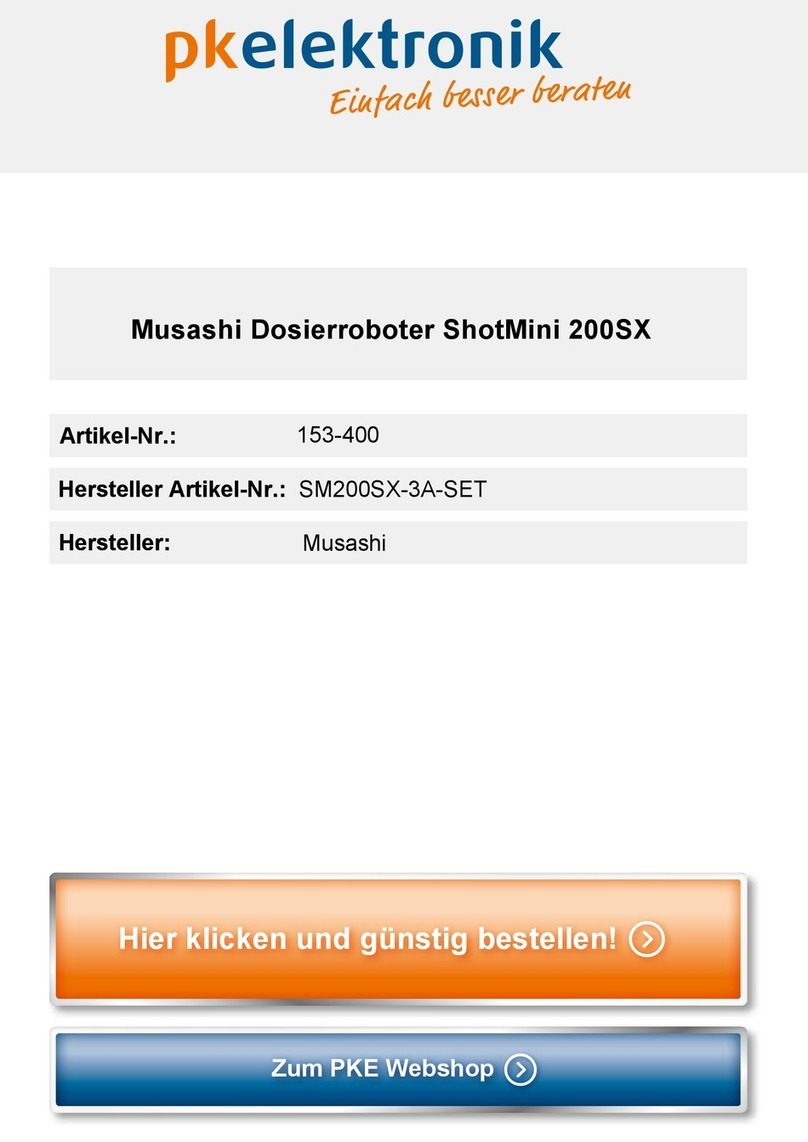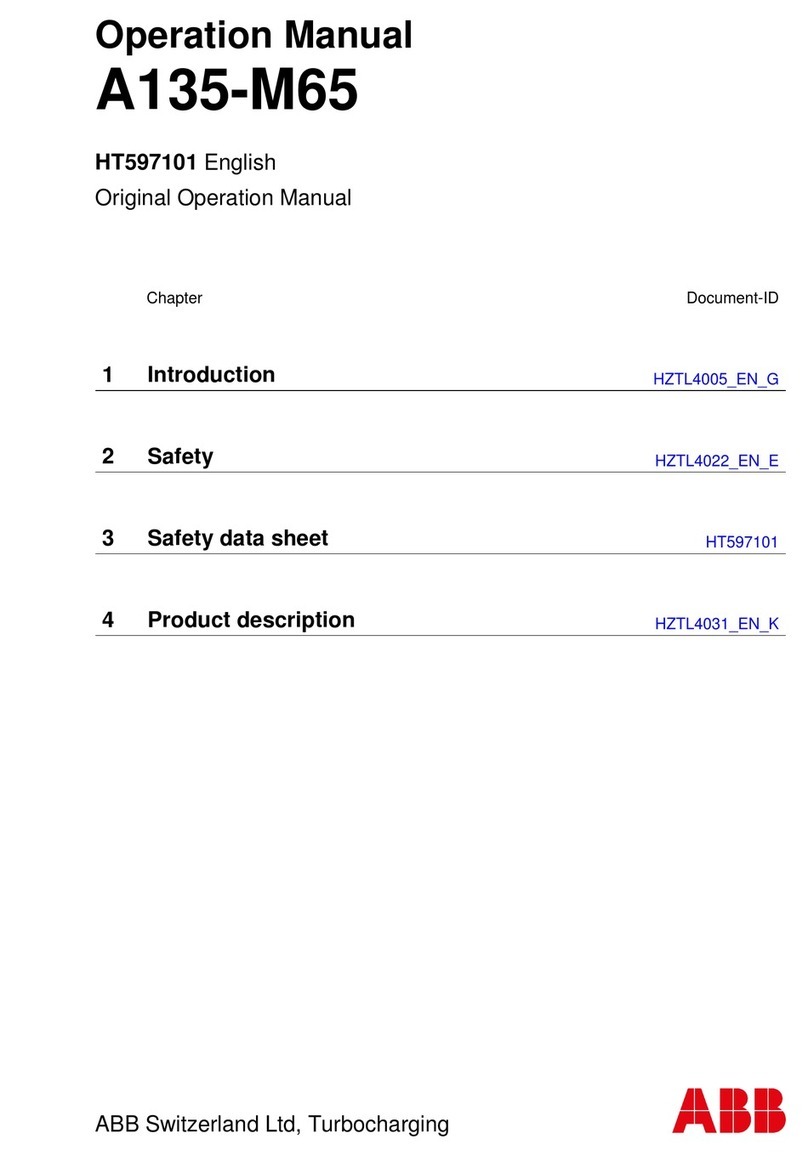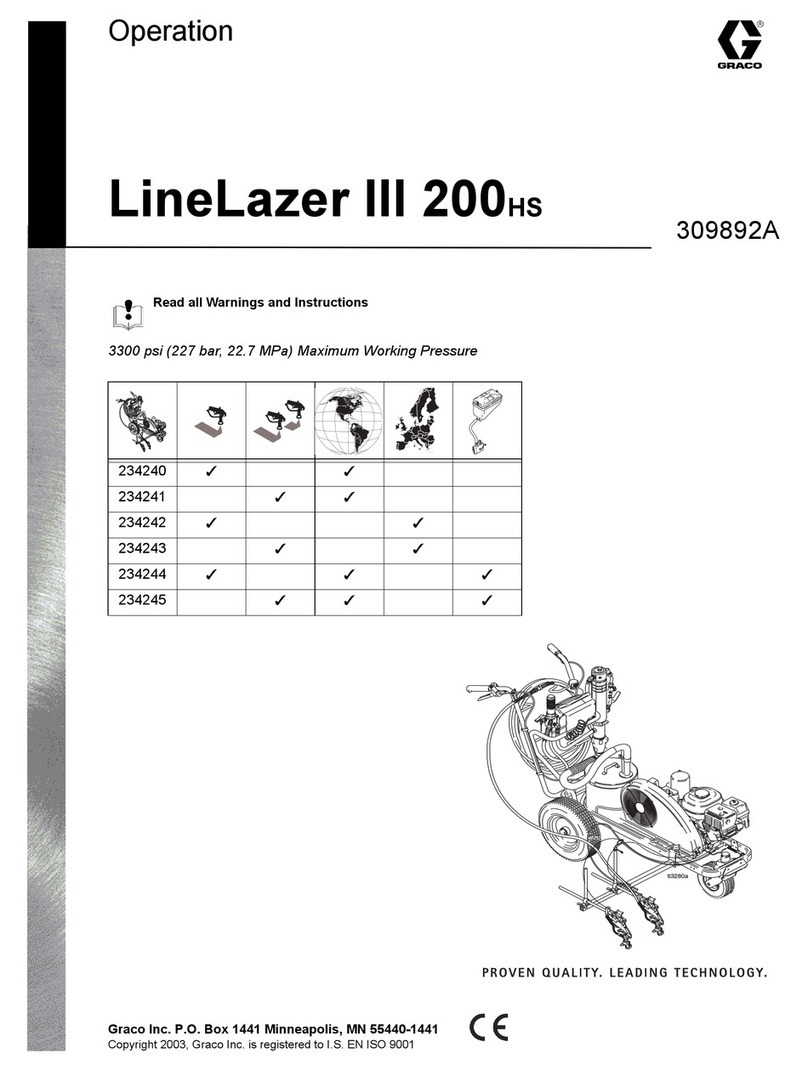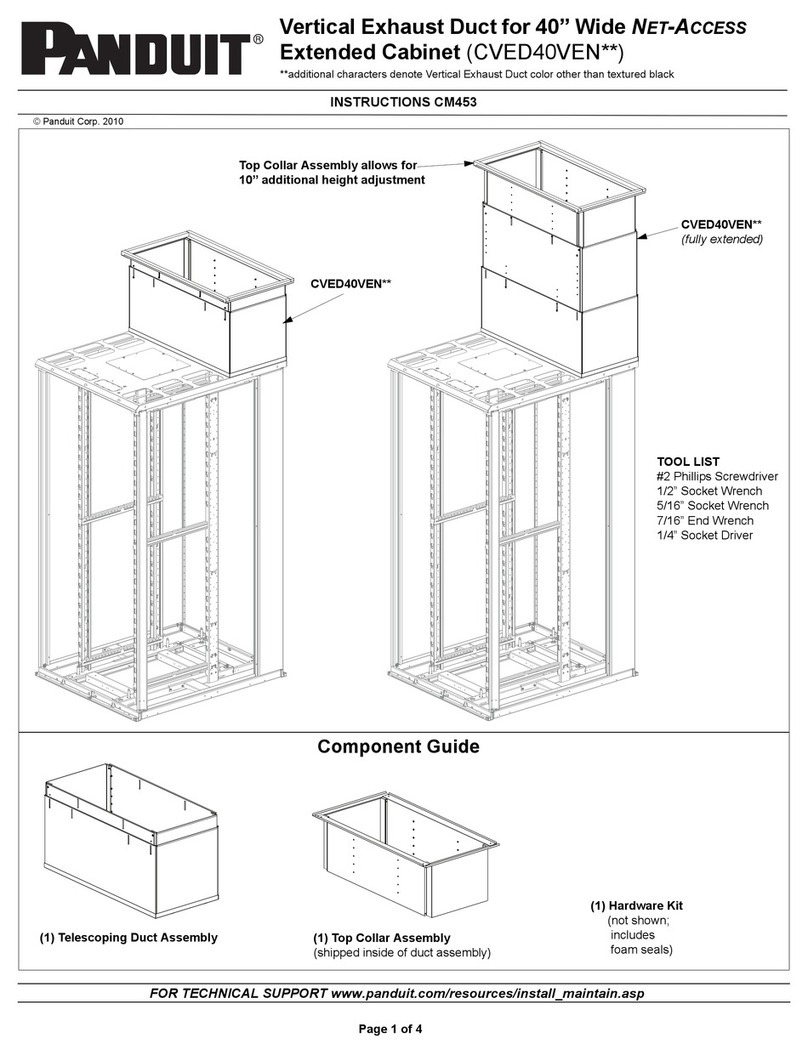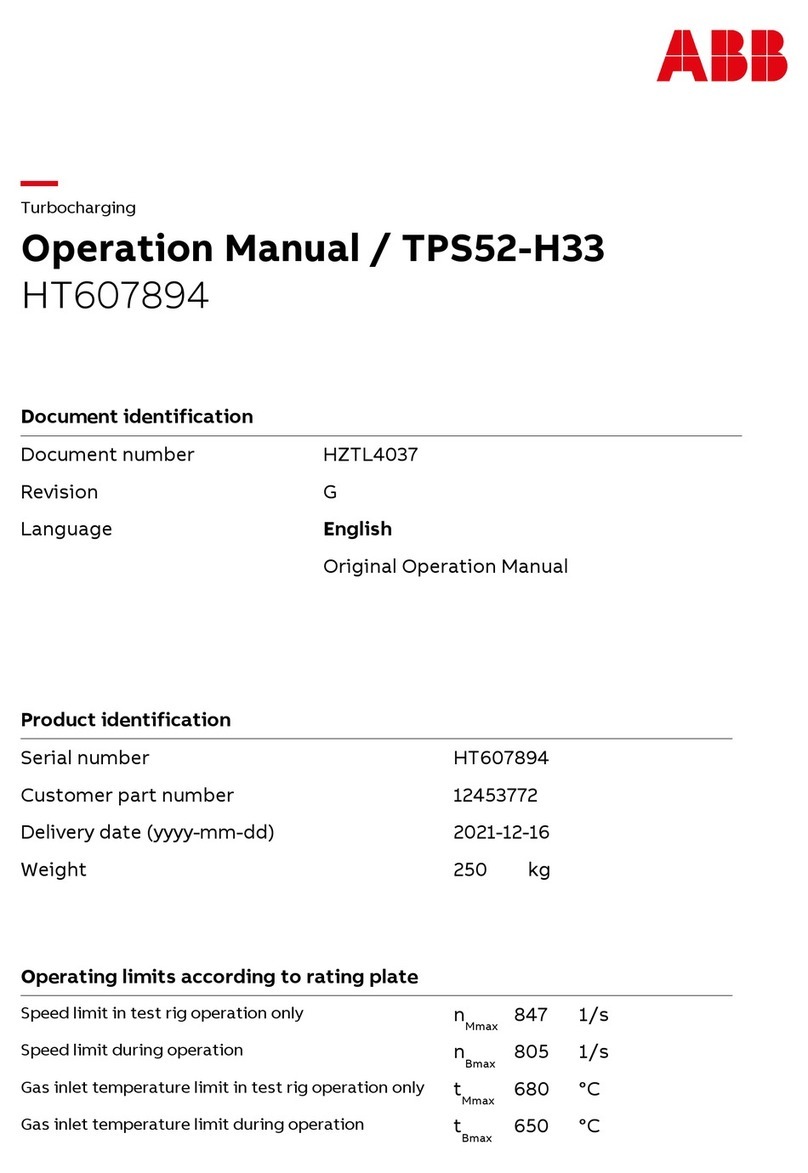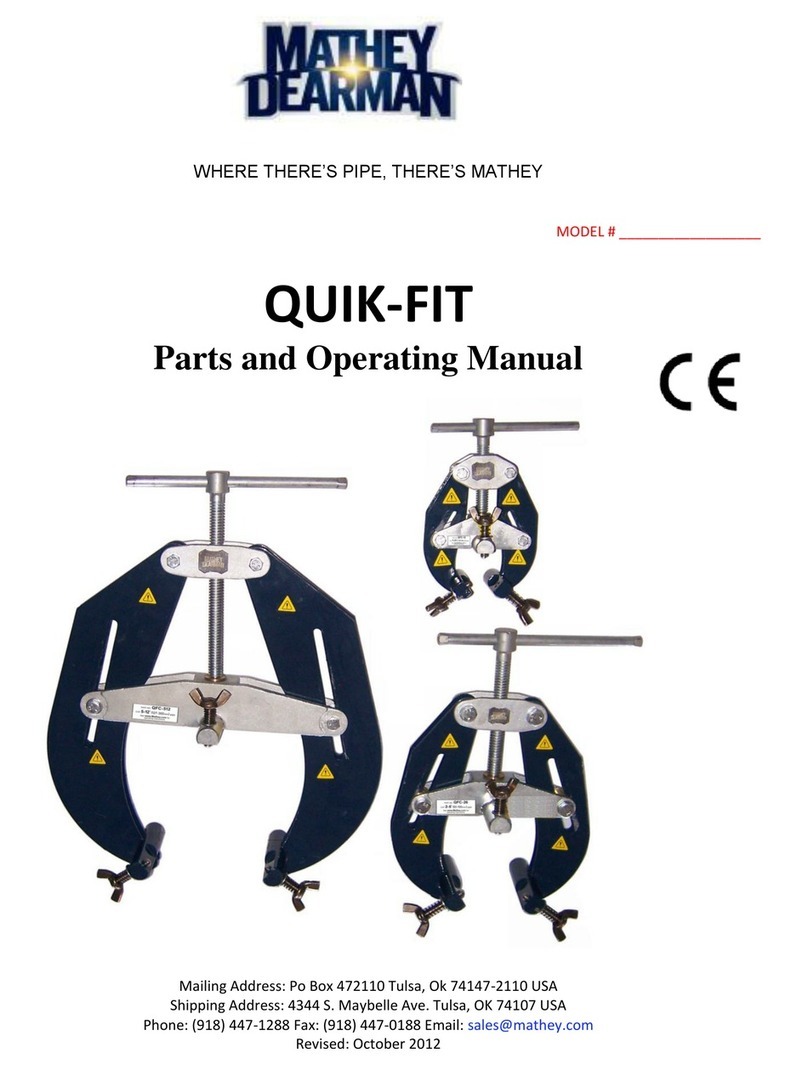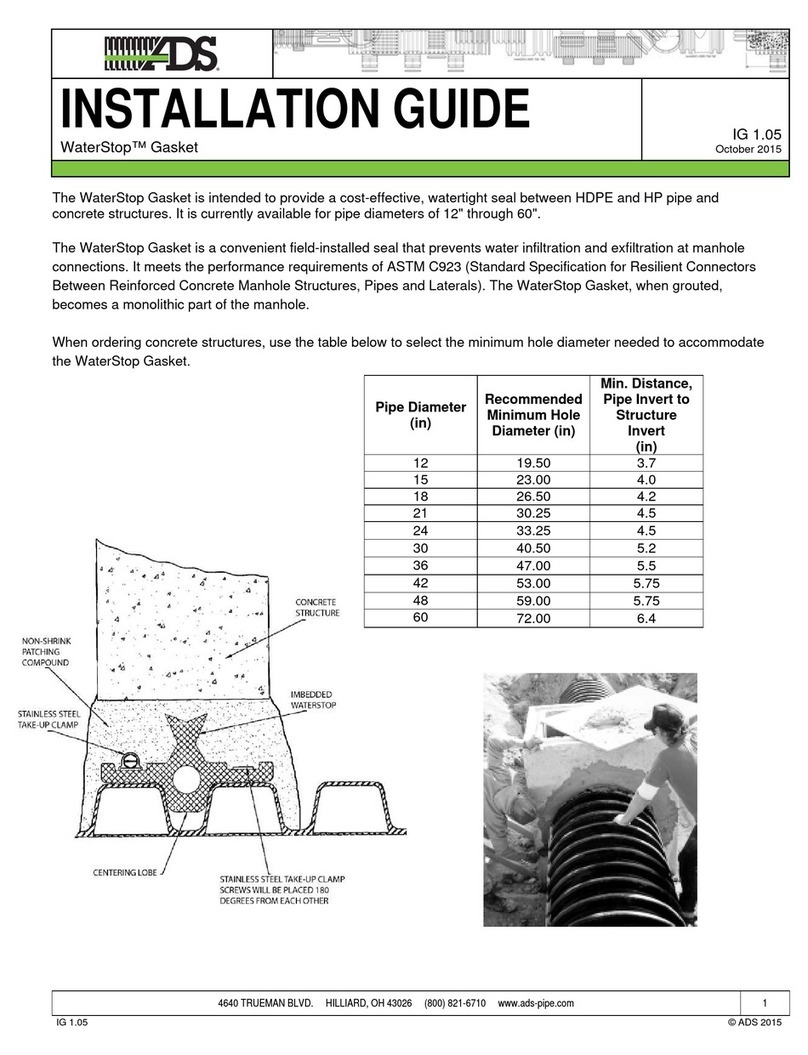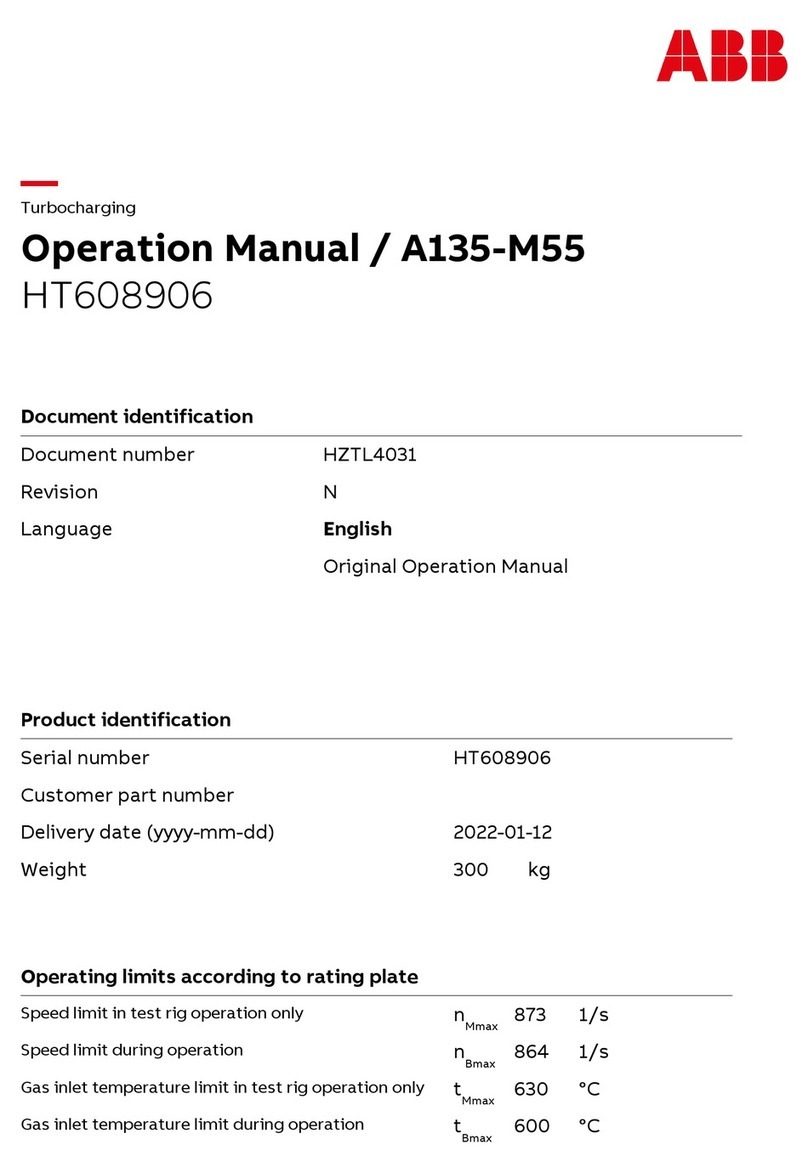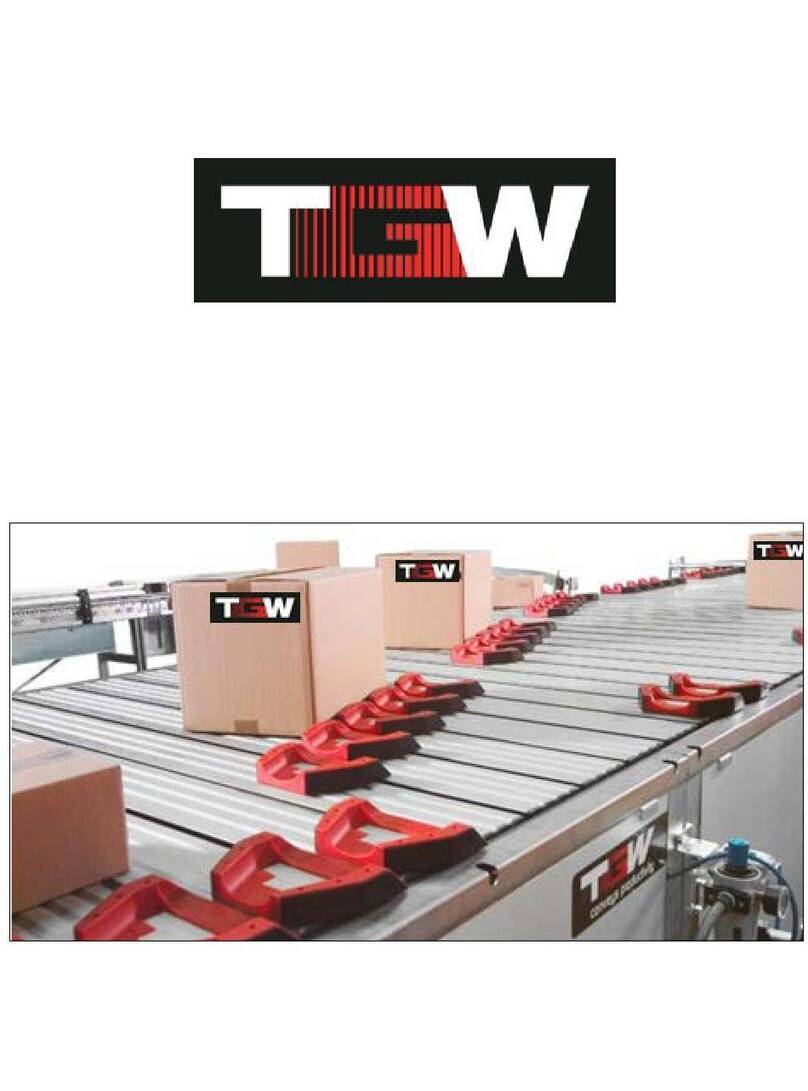Trion Mini M.E. Instruction manual

TRION®| www.trioniaq.com
Mini M.E.
Mini Mist Eliminator
Industrial Applications
READ AND SAVE THESE INSTRUCTIONS

www.trioniaq.com Mini M.E.
1
Installation, Operation, & Maintenance Manual
Mini Mist Eliminator for Industrial Applications
Mini M.E.
Table of Contents
Inspection...........................................................................................................................................2
SafetyInformation..............................................................................................................................2
Introduction.........................................................................................................................................2
Pre-InstallationConsiderations..........................................................................................................2
Hood and Duct Design..................................................................................................................2
UnitLocation......................................................................................................................................3
Installation.........................................................................................................................................3
Location and Mounting.................................................................................................................3
Ductwork......................................................................................................................................3
DrainPiping..................................................................................................................................3
Operation...........................................................................................................................................3
InitialStart-Up...............................................................................................................................3
IndicatingLight..............................................................................................................................4
Care and Maintenance.......................................................................................................................4
General.........................................................................................................................................4
Cleaning........................................................................................................................................4
Blower/Motor Assembly................................................................................................................5
Troubleshooting..................................................................................................................................5
Diagrams/Exploded View Figures......................................................................................................7
Figure 1 - Drawing with Drain Line..............................................................................................7
Figure 2 - Replacement Parts.......................................................................................................8
Figure 3 - Base Unit Outline Drawing...........................................................................................9
Figure 4 - Outline Drawing with Optional Accessories...............................................................10
Figure 5 - Blower Curves............................................................................................................11
Figure 6 - Wiring Diagram..........................................................................................................12
Limited Warranty..............................................................................................................................12
Please read these instructions carefully for trouble free operation
and to get the most out of your purchase. For further information
concerning this project, contact your local TRION representative.

www.trioniaq.com
Upon receipt, the unit(s) should be inspected for any
damage incurred in shipping. Damage should be noted
and a claim immediately led with the carrier at the
receiving end. Contact your TRION Representative or
the factory for authorization and instructions prior to
the return of any equipment.
1. Please read and understand this manual before
installing and operating the equipment.
2. The equipment location, installation and operation
should comply with the National Electrical Code
and local building and re codes. When in doubt,
consult the proper authorities.
3. Disconnect, lockout and tag the electrical power
while performing service work within the unit
cabinet.
4. All mounting arrangements used in the installation
must be able to support the weight of the unit plus
the weight of added accessories, options, and
collected contaminant.
5. The TRION MINI M.E. weighs 104 lbs. (47 kg.).
This manual should be carefully read before starting
the preparation and installation of the air cleaner.
The installation should conform to all local ordinances
associated with building codes and electrical codes
required for the unit. Authorities having jurisdiction
should be consulted before installation is made.
If there are no local codes, the installation should
conform to the National Electrical Code.
The TRION MINI M.E. is designed primarily for
the ltration of mist and smoke from metalworking
processes. The mist and smoke may be created from
oil-based, synthetic, semi-synthetic, or water-based
Mini M.E. 2
Installation, Operation, & Maintenance Manual
coolants like those used in cutting and grinding
operations.
The unit, arranged vertically for upward airow,
provides collecting efciency up to 95% and consists
of up to four ltration stages (as described below) and
a motor/blower. An optional inlet plenum is available
for ductwork connection.
The rst stage of ltration consists of two aluminum
mesh prelters in series to remove larger mist droplets.
The second stage – electrostatic precipitator – is the
primary ltration method and consists of two Ionizing/
Collecting Cells in series to charge and collect up to
95% of mist and smoke.
The third stage is either an aluminum mesh lter or an
optional charcoal lter for odor control.
The optional fourth stage is a 99.97% HEPA lter that
is mounted externally on top of the unit discharge grille.
In application, the contaminated air is captured at its
source from a machine enclosure or via a hood and
is transported to the unit through ducting furnished by
others. The contaminated air is then pulled upward
through the various stages of ltration and the cleaned
air is exhausted from the top of the cabinet through a
discharge grille. The unit should be located in the vertical
position and as close to the source of contaminant as
practical to minimize the length of ducting.
Hood and Duct Design
The effectiveness of the installation is dependent upon
the efcient capture and transport of the contaminant
at its source to the unit for collection.
In cases where adequate hooding is not provided
by the basic machine or the process creating the
contaminant, the design of the pick-up hood and the
transport ducting should not be oversimplied. Due to
the wide variety of applications, this subject warrants
a great deal more consideration than can be given
here. It is recommended that a recognized text be
consulted, such as Industrial Ventilation – A Manual of
Recommended Practice, available from:
WARNING!
Do not install this equipment in an area where
combustible vapors or gases exist. Do not use
this equipment for the collection of any materials
where there is a risk of re or explosion.
Inspection
Safety Information
Introduction Pre-Installation Considerations

www.trioniaq.com Mini M.E.
3
Installation, Operation, & Maintenance Manual
American Conference of Governmental Industrial Hygienist
6500 Glenway Avenue, Building D-7
Cincinnati, OH 45211-4438 U.S.A.
(Library of Congress Catalog Card #62-12929)
The duct between the pick-up hood and the unit
should be as short as possible and of adequate cross
sectional area to provide a transport velocity of 1500-
2000 feet per 3 minute (7.6-10.2 m/sec.). If the optional
inlet plenum is furnished, one 6” (152 mm) diameter
air inlet collar is provided. The ductwork should be A)
sloped to prevent the pooling of liquids, and B) sealed
to prevent leakage.
When ducting is utilized, the static pressure created
by the ductwork must be considered in conjunction
with the pressure that will be created by the build-up
of contaminant on the lters. Refer to the (System
Performance) Blower Curves of this manual.
The unit should be mounted vertically with ample
space above the discharge grille (12” minimum,
305mm). Also, provide ample lter access in front of
the unit (24” minimum, 610mm) and ample service
access on the right-hand side. If one unit is to collect
the contaminant from two sources, the unit should
be located so that the ducting from each source is
identical in length and conguration. If this is not
practical, the ducting should be designed and sized
so that the static pressure created by each duct run
is identical, or so that adequate capture and transport
velocities from each source are assured.
Unit Location
Installation
WARNING: ELECTRICAL SHOCK HAZARD
This unit should only be installed by a qualied
HVAC technician in accordance with the
National Electrical Code (NEC) and local codes
and ordinances. Do not connect the unit to the
power source until installation is complete.
Improper electrical installation may damage
equipment, can create a hazard, cause personal
injury or death, and will void the warranty.
Location and Mounting
Review the Pre-Installation Considerations as found
on Page 3 and prepare the unit for installation in the
planned location as follows:
1. To reduce weight for ease in handling and to gain
access inside the cabinet, open the access door
and remove the ionizing/collecting cells, placing
them safely aside.
2. Next, locate, level and secure the unit in the
desired location, assuring that the weight of the
unit plus the weight of any accessories, collected
contaminant and any ducting are adequately
supported. See Safety Information on page 3 for
unit weight.
3. Replace the ionizing/collecting cells.
Ductwork
Connect the ductwork as described under Hood and
Duct Design on page 3, being sure it is sloped to
prevent the pooling of liquids and is sealed to prevent
leakage.
Drain Piping
The bottom of the unit is open to allow drainage back
into a machine enclosure. The optional inlet plenum is
provided with a ½” NPT (12 mm) female connection. If
the collected liquid drain-off is to be piped to a machine
sump or an oil recovery reservoir, the piping must be
adequately trapped to overcome the negative pressure
inside the unit cabinet and thereby prevent air being
drawn through the drain, refer to diagram on page 7.
Initial Start-Up
1. Double-check the unit for proper mounting
securement, ductwork, piping, and wiring
connections.
2. Open the access door and check the interior cabinet
for cleanliness and ensure that all of the ltration
stages are in place.
3. Close the access door and plug the MINI M.E. into
a standard 3-wire grounded wall receptacle using
WARNING!
Sharp edges may be located on metal ductwork.
Wear protective gloves when handling.
Operation

www.trioniaq.com
Mini M.E. 4
Installation, Operation, & Maintenance Manual
the power cord provided.
4. Turn the variable speed control switch from the
“Off” position to initiate the blower. Air should blow
out of the discharge grille located on top of the unit.
Adjust airow as required.
Indicating Light
The LED light on the front panel provides an indication
of the electrical operation of the electronic air cleaner.
Constant illumination indicates correct operation of the
power supplies and power to the ionizing/collecting
cells. If the LED is continuously ickering, or fails to
glow, it is an indicator of potential problems. Refer to
the Troubleshooting diagram to correct the problem.
General
Care and maintenance includes the periodic cleaning
and replacement of the various ltration components,
and servicing the blower/motor assembly.
The frequency for routine cleaning and/or replacement
of the lters after initial start-up is dependent upon the
nature and amount of contaminant being collected.
Relatively clean mist particles that coalesce into larger
droplets when collected tend to drain from the collecting
surfaces in a “self-cleaning” action. Mist mixed with
semi-solids, smoke, dust, and other solids do not drain
SAFETY NOTE
Factory designed access to all electrically
charged high voltage components contain
electrical interlocks for the safety of operating
personnel. Any additional access that may be
provided in the system, where there is access
to high voltage, must be equipped with such
interlocks. Interlocks are readily available from
the factory.
Care and Maintenance
WARNING: ELECTRICAL SHOCK HAZARD
Before cleaning or servicing this unit it is
recommended that this unit be disconnected
from any electrical supply outlet. Failure to follow
these precautions could result in electrical shock,
re, death or serious personal injury.
as readily and therefore require more frequent manual
cleaning. As the make-up and quantity of contaminants
vary from application to application, practical
maintenance time schedules are best established by
several visual examinations of the ltration components
after the unit is placed into operation.Also, observing the
contaminant pick-up at the hood is a good indicator of
the lter condition. Any depreciation in the effectiveness
of pick-up indicates a drop off in capture velocity, which
is usually attributed to clogged lters.
Guide for Recommended Cleaning Frequency
Light loading 4-6 months
Medium loading 2-4 months
Heavy loading 1-2 months
Very heavy loading 2 weeks-1 month
Cleaning
The aluminum mesh lters and ionizing/collecting
cells require periodic cleaning. Hot water, 140-1600
F (60-710 C), and a good non-foaming, non-corrosive
detergent (safe for use on aluminum) should be used.
TRION’s Tridex APS liquid detergent, formulated
specically for this purpose, is available through your
TRION Representative.
The lter components should rst be rinsed in warm
water, and then soaked in a detergent water solution.
When the contaminant loosens or dissolves, the lters
should then be thoroughly rinsed and dried prior to
placing them back into service. When cleaning the
components, it is not necessary to “make them shine.”
Cleaning is to remove the accumulated dirt build-up.
Dirt stains do not impair efciency.
WARNING!
Do not allow debris or foreign objects to
become lodged between the cell plates. This
will cause shorting and damage the cells and/
or the power supply.
CAUTION!
Do not use steam cleaners to wash the cells.
The high temperatures may cause the cell plates
to warp or create other damage to the cell.

www.trioniaq.com Mini M.E.
5
Installation, Operation, and Maintenance Manual
If a scheduled maintenance time for lter component
cleaning is at a premium, it may be advantageous to
maintain a clean, spare set of lter components so
that service to the dirty components can be completed
within a few minutes.
Blower/Motor Assembly
After 1,000 hours of operation, remove the blower
access panel on top of the unit. Check and correct the
following, if necessary:
1. Securement of fasteners.
2. Blower wheel and compartment for excess dirt
buildup.
NOTE: Blower and motor bearings are sealed and
require no lubrication.
WARNING!
Factory designed access to all electrically
charged high voltage components contain
electrical interlocks for the safety of operating
personnel. Always unplug the unit while
performing service within the cabinet.
WARNING: RISK OF ELECTRIC SHOCK
These maintenance and service instructions
are for use by qualied personnel only.
To reduce the risk of electric shock, do
not perform any servicing other than that
contained in the operating instructions unless
you are qualied to do so.
All TRION Air Cleaners are manufactured to provide
continued, trouble-free service. However, as with all
mechanical equipment, breakdowns can occasionally
occur.
Refer to the Replacement Parts diagram for
replacement parts.
Before troubleshooting the unit, review the safety
information on Page 3, refer to the Wiring Diagram on
Page 12, check for proper wiring connections, and the
correct input line voltage.
Troubleshooting

www.trioniaq.com
Troubleshooting Procedure
Mini M.E. 6
Installation, Operation, and Maintenance Manual
Turn unit on.
Motor operates
properly. Power
supply light is on.
Yes Yes Yes Yes
Motor does
not operate at
all or operates
intermittently.
Power supply light
is on.
No No
Motor operates
properly.
Power supply
light operates
intermittently or
not at all.
No
Motor operates
with little or no
air volume from
the unit.
Check for:
1. Faulty control
switch
2. Motor turns
frequently
3. Faulty motor
capacitor
4. Loose wire
connection
or wire
disconnected
Check for:
1. Dirty Ionizer/
Collector cells
2. Faulty control
3. Failed
transformer
4. Failed power
supply
Check for:
1. Dirty or
clogged
lters
2. Inlet or
discharge
blocked
3. Blower
wheel dirty
4. Incorrect
line voltage
Repair completed. Contact your local
TRION distributor.
No
Yes
Unit operates
correctly.

www.trioniaq.com Mini M.E.
7
Installation, Operation, & Maintenance Manual
Figure 1 - Drawing with Drain Line

www.trioniaq.com
Mini M.E. 8
Installation, Operation, & Maintenance Manual
Figure 2 - Mini M.E. Replacement Parts
Item TRION Part No. Description
1 334562-005 Lift and Turn Latch
2357679-001 Motorized Impeller Assembly, 120V/60Hz
357679-002 Motorized Impeller Assembly, 230V/50-60Hz
3257680-001 Capacitor, 20µF, 120V
257680-002 Capacitor, 50µF, 230V
4239071-006 Transformer, 120V
239071-011 Transformer, 230V
5 356764-001 PCB Assembly
6 257544-001 HV Contact Board Assembly
7 132311-001 Interlock Switch
8235477-001 Speed Control, 120V/60Hz
235477-002 Speed Control, 230V/60Hz
9 139999-001 Speed Control Knob
10 141102-001 LED, Red
11 441729-201C Ionizer/Collector Cell
12 240550-013 Aluminum Mesh Filter
13 245395-007 Charcoal Filter (Optional)
14 220110-929 Ionizer Wire Assembly

www.trioniaq.com Mini M.E.
9
Installation, Operation, & Maintenance Manual
Figure 3 - Base Unit Outline Drawing

www.trioniaq.com
Mini M.E. 10
Installation, Operation, & Maintenance Manual
Figure 4 - Outline Drawing with Optional Accessories

www.trioniaq.com11 Mini M.E.
Installation, Operation, & Maintenance Manual
Figure 5 - Blower Curves
Mini M.E. EAC, 120V - 230V/60Hz
0
0.5
1
1.5
2
2.5
0100 200 300 400 500 600 700
CFM
In H
2
O
(3) 2" Alum. Mesh
(2) 2" Alum & Carbon
(3) Alum & HEPA
(2) Alum & Carbon & HEPA
Mini M.E. EAC, 240V/50Hz
0
0.5
1
1.5
2
0100 200 300 400 500 600
CFM
In H2O
(3) 2" Alum. Mesh
(2) 2" Alum & Carbon
(3) Alum & HEPA
(2) Alum & Carbon & HEPA

www.trioniaq.com 12
Mini M.E.
Installation, Operation, & Maintenance Manual
Figure 6 - Wiring Diagram
Limited Warranty
Seller warrants the equipment of its manufacture to be free from defects in workmanship and material for a period of three (3)
years after shipment or if applicable – three (3) years after initial startup of equipment, whichever occurs rst. This warranty
is limited, however, to the repair or replacement of defective equipment, which is returned, freight prepaid, to Seller’s factory.
This limited warranty does not apply to any part or component that is damaged in transit or when handling, has been subject
to misuse, negligence or accident, has not been installed, operated or serviced according to Seller’s instructions, or has
been operated beyond the factory-rated capacity or has been altered in any way.
Seller’s liability is limited to replacement of defective parts or components and does not include any cost of labor (including,
but not limited to, labor required to remove and/or reinstall any defective part) other than TRION factory labor.
TRION shall not be responsible for loss of use of any product, loss of time, inconvenience, or damage to other equipment or any
other indirect or consequential damage with respect to property whether as a result of breach of warranty, neglect or otherwise.
THE WARRANTIES AND LIABILITIES SET FORTHABOVE ARE IN LIEU OF ALL OTHER WARRANTIESAND LIABILITIES,
EXPRESSED OR IMPLIED, IN LAW OR IN FACT, INCLUDING IMPLIED WARRANTIES OF MERCHANTABILITY AND
FITNESS FOR PARTICULAR PURPOSE.
The foregoing shall constitute the total liability of Seller in the case of defective performance of all or any of the equipment
or services provided to Buyer. Buyer agrees to accept and herby accepts the foregoing as the sole and exclusive remedy
for any breach or alleged breach of warranty by Seller.

TRION®
101 McNeill Rd. | Sanford, NC 27330
© TRION 2015. All Rights Reserved.Form No. 157550-001 Rev. 11/15
Table of contents
Other Trion Industrial Equipment manuals
Popular Industrial Equipment manuals by other brands

Baileigh Industrial
Baileigh Industrial DDTM-8052-HD Operator's manual
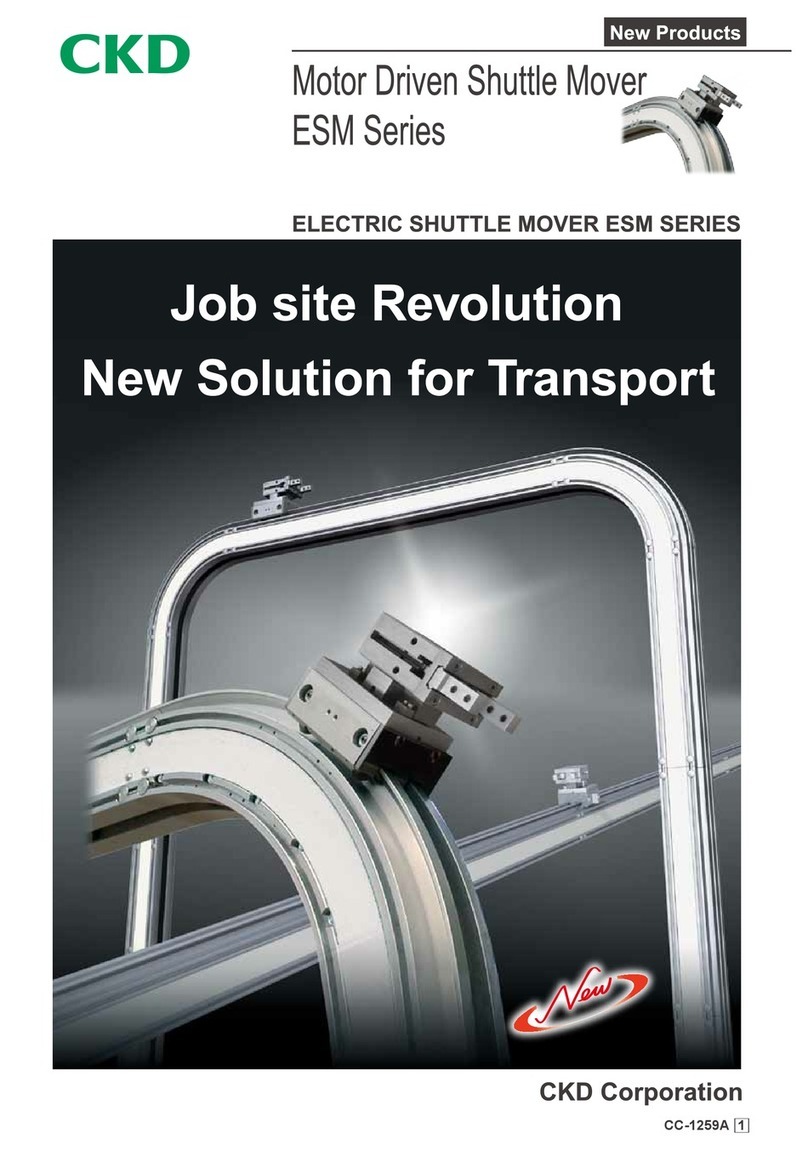
CKD
CKD ESM Series manual
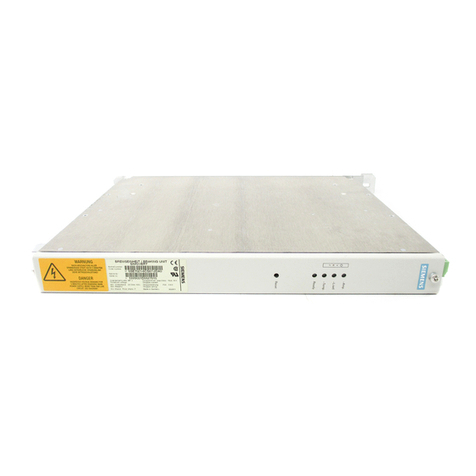
Siemens
Siemens SIMOVERT MASTERDRIVES 6SE7021-6CS87-2DA0 operating instructions

SMW Autoblok
SMW Autoblok Mario Pinto LT Use and maintenance instructions
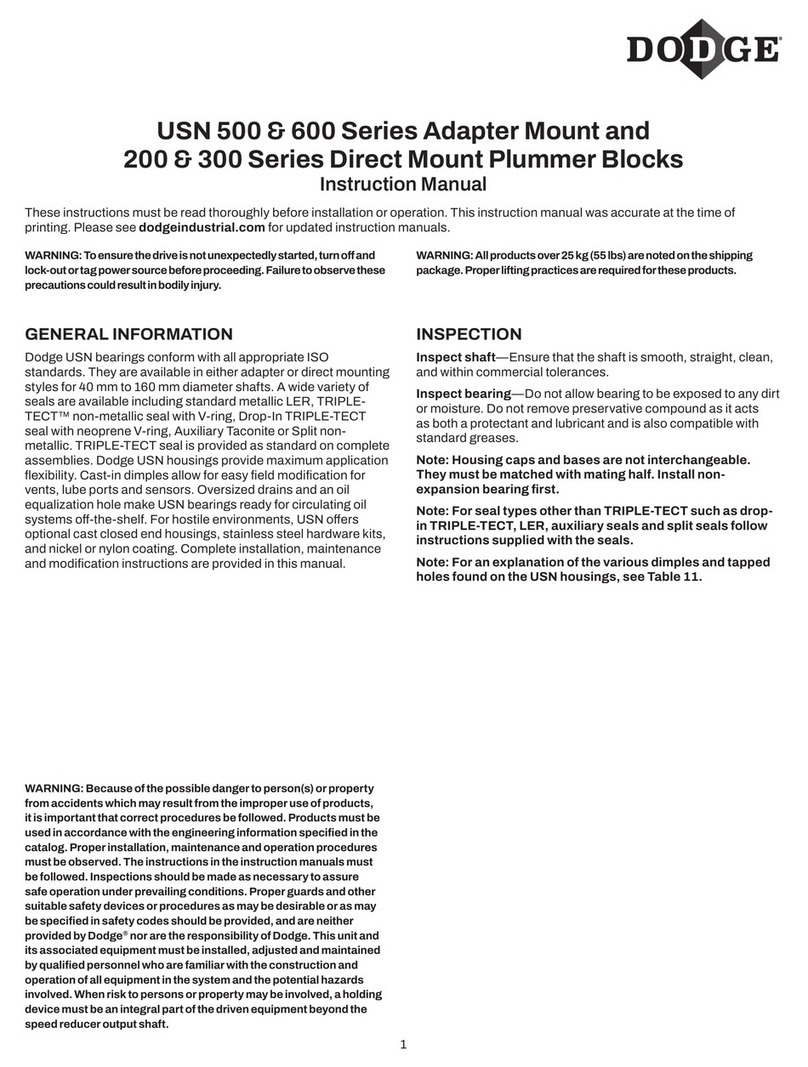
Dodge
Dodge USN 500 Series instruction manual

Burkert
Burkert 6519 operating instructions
